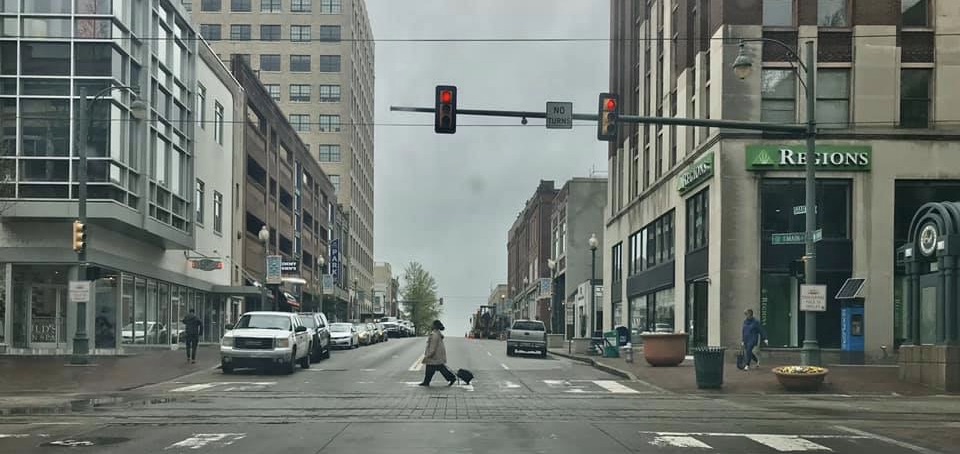Looking back at March, 2020, when the world stopped.
By Wayne Dowdy
Your correspondent shares some of his Covid-19 experiences and offers historical context for this latest public health crisis.
Disorder in the grocery store
On Monday March 16th my friend Derrick Patterson and I ate our last meal – for the time-being inside a restaurant – then went to the grocery store.
When we arrived at the SuperLo on Colonial the parking lot was full as was the store. People frantically searched the near empty shelves while the checkout lines snaked far into the aisles. We found the last pack of bologna, a box of saltines (the bread was gone), two packages of peanut butter and crackers, and five breakfast meals Derrick likes to eat. Waiting our turn in line, my thoughts drifted back to September 2, 1878.
Early that day hundreds of Memphians gathered at the relief committee’s commissary to receive their daily allotment of food. No doubt they were scared and hungry – the day before it had been announced there were 152 new cases of yellow fever and ninety Memphians had died. Suddenly an altercation erupted between a citizen and a police officer. The crowd became unruly. Had a contingent of black militiamen not stood their ground, a riot almost certainly would have ensued.
On March 16th, there was no riot in the SuperLo. Everyone waited patiently while the staff did an excellent job of serving their customers.

“Dark, Deserted, and Silent”
During the last four days we have driven around the city trying to document what is happening to my hometown.
Derrick filmed videos and I took photos of what is now happening in the streets, which was not much. As I drove through the quiet, semi-empty roads I thought again of the late summer and early fall of 1878. Nearly everyone who survived the yellow fever epidemic commented on how silent the city was. A nurse named Kezia DePelchin wrote that the “large stores and warehouses on Front St. we’re closed. A woman with a few apples to sell on one block and two children sunning themselves on the steps of a large building on another block were all the signs of life.”
Major W.T. Walthall, a volunteer from Mobile, Alabama stated when he arrived in Memphis, “the streets were dark, deserted, and silent.”




“The Luxuries of Woe”
Late Tuesday morning I learned that a friend of mine had unexpectedly died.
She was a dedicated professional who had an underlying condition and had recently been traveling. The shock and sorrow that I felt also took me back to Memphis in 1878. Newspaper editor J. M. Keating described the coffins piling up at Elmwood Cemetery: “daily waiting interment, which had to be postponed for days, sometimes, owing to the scarcity of gravediggers, the terrible death-rate, and the sickness of those in charge of the cemetery.”
Noticing that Elmwood’s bell was No longer tolling for the departed, Keating remarked that Memphis did not have the time for “the luxuries of woe.”
Your correspondent wants to remind his neighbors that while it is helpful to draw parallels between Memphis’s experiences with yellow fever and Covid-19 it is not the same. Unlike in 1878 we know exactly what to do. Social distancing will destroy Covid-19 as surely as a killing frost decimated the mosquitoes that carried yellow fever.
That’s the way Memphis was … in March 2020.
* * * *
To view Wayne and Derrick’s videos documenting the empty streets, visit Wayne’s Facebook post here.
Memphis author and historian Wayne Dowdy is the Manager of the Main Library’s Memphis and Shelby County Room. He also writes for the local monthly publication Best Times and is the author of several books on Memphis history, including A Brief History Of Memphis, Hidden History Of Memphis, and Mayor Crump Don’t Like It.

